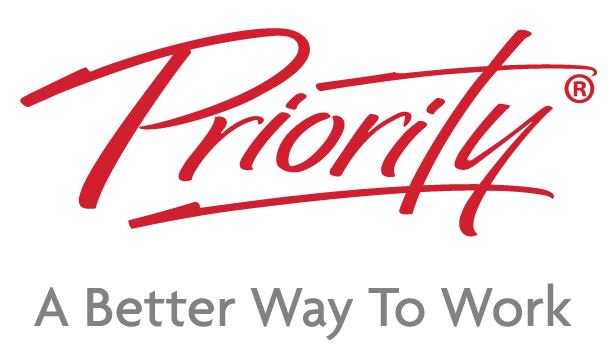Whether you’re actively job hunting or simply open to new opportunities, your resume is one of your most valuable tools. Keeping it fresh and relevant is key, and showcasing your Microsoft Word skills is a smart way to make it stand out.
There’s much more to MS Word than just simple word processing. Knowing how to demonstrate more advanced Word skills on your resume can set you apart from other candidates. In this guide, we’ll cover the top MS Word skills employers look for and how to list them effectively to demonstrate your proficiency in Microsoft Office.
Why Microsoft Word Skills Still Matter in 2025
Despite the emergence of several competitors, MS Word remains one of the most widely used software programs in today’s workplaces. As a result, recruiters expect job candidates to have a solid grasp of Word for tasks like how to create documents, editing, and formatting. But they’re just the basics.
Highlighting more advanced Microsoft Office skills on your resume shows you’re ahead of the curve and other candidates.
Which Microsoft Word Skills Belong on a Resume?
Like most Microsoft programs, MS Word has a huge range of features ready and waiting for you to master. But what is it that actually impresses employers? Here’s a quick rundown of the ones worth getting your head around and adding to your resume.
Formatting and Layout Skills
Employers love candidates who can confidently work with styles, adjust margins and spacing, create tables, and handle section breaks.
Document Design Tools
Knowing how to use templates, SmartArt, and headers or footers shows you can create polished, professional documents, instead of the stock-standard blank page. These come in handy for reports, proposals, or client materials.
File Management and Compatibility
Skills like saving documents as PDFs, using cloud storage like OneDrive, and securely sharing files through SharePoint show you can navigate today’s digital workplaces with ease. This might include co-authoring documents in real time via Microsoft SharePoint, sharing files through Teams, or sending tracked documents for review through Microsoft Outlook.

Collaboration Features
Experience with tools like Track Changes, Comments, and Version History shows you can collaborate effectively within Word, providing feedback, reviewing edits, and maintaining document integrity. Even better, when you combine Word skills with other collaboration tools like Microsoft Teams, SharePoint, and Microsoft Outlook, you demonstrate an ability to work seamlessly across platforms. All of which reflect strong communication and teamwork skills valued in today’s workplaces.
How to List Microsoft Word Skills on Your Resume
Now you’ve got the skill set, how should you list Microsoft Office skills? Here’s how to describe MS Office skills in the right places and with the right examples.
Where to Include Them
The most common place to highlight your Microsoft Word skills is in a dedicated Skills section. List them alongside other key tools or software you’re competent in. If you’re a whizz at Microsoft Excel (highly recommended), Microsoft PowerPoint, or even the entire Microsoft Office suite, list them also.
You can also showcase your skills in the formatting of your resume itself. Weave them into your work experience bullet points to help show real-world application. If you’ve completed any courses or Microsoft Office certifications, add them to a Certifications or Tools section to reinforce your expertise.
Resume Examples
Providing specific examples is crucial for demonstrating your proficiency levels and the real-world application of your MS Word Skills. Here’s how that might look in action:
- “Streamlined document collaboration using Microsoft Word’s Track Changes and Comments features, in conjunction with Microsoft Teams for real-time feedback.”
- “Formatted large and complex documents in MS Word using styles, tables, and section breaks to ensure consistency and readability.“
Format your resume to make it as polished and reader-friendly as possible—it won’t go unnoticed.
Common Mistakes to Avoid
One of the biggest slip-ups is simply listing “Microsoft Word” on your resume with no context or examples. Employers want to know how you’ve used it. Don’t be afraid to go into detail. Another common mistake is overstating your skill level; if you say you’re an expert, be ready to prove it.
Don’t forget: your resume itself is a reflection of your Word skills, so make sure it’s free of formatting errors and looks polished from top to bottom.
Don’t forget to include a professional summary. Your professional summary should highlight your key skills, such as MS Excel proficiency levels, experience with productivity tools, and advanced knowledge, as well as career goals in a clear, concise paragraph at the top of your resume.
Tips to Improve Your Word Skills Before Applying
While there are plenty of free tutorials and YouTube videos available, the best thing you can do is invest in structured, hands-on learning that builds real confidence.
Microsoft’s official training resources are a solid start. Here, you can practise using Word’s resume templates. This resume builder not only enhances your own resume but also offers another opportunity to sharpen specific skills.
While MS tutorials are an excellent free resource, nothing beats guided practice with expert feedback. Look out for more in-depth courses available where you can engage with a certified facilitator to hone your basic understanding and develop advanced skills.
 Priority Management is your trusted leader in workspace solutions, and our Microsoft Word professional development courses are designed to help you work smarter, streamline document creation and collaborate more effectively.
Priority Management is your trusted leader in workspace solutions, and our Microsoft Word professional development courses are designed to help you work smarter, streamline document creation and collaborate more effectively.
A Small Skill That Makes a Big Impact
Polished resumes don’t go unnoticed, and showing strong Microsoft Word skills on yours sends a clear message about your attention to detail and professionalism. In today’s competitive job market, these extra skills can set you apart.
Ready to sharpen your Word skills and boost your career prospects? Check out the Microsoft Word training courses at Priority Management and take the next step toward standing out.
Frequently Asked Questions
How do you describe Microsoft Word skills on a resume?
Describe your Microsoft Office skills by focusing on what you can do with the program, such as formatting reports, using templates, collaborating with Track Changes, or creating polished documents. Be sure to list specific Microsoft Office skills related to the job description you’re applying for.
How to put word processing skills on a resume?
List word processing skills in your skills section and highlight them in your work experience. Use action verbs like “Created,” “Formatted,” or “Collaborated” to show how you applied those skills in real tasks as a Microsoft Office specialist.
How do you make a good resume on Microsoft Word?
Use a clean, professional resume template in Word, and make sure your formatting is consistent throughout. Focus on clear section headings, bullet points, and plenty of white space for relevant skills and to describe Microsoft Office skills to make the document easy to scan.
Is Microsoft Word good for resumes?
Yes, the whole Microsoft Office program is one of the most widely accepted tools for resumes, especially when applying through online job portals. It’s also compatible with most applicant tracking systems (ATS), helping ensure your resume reaches the hiring manager as intended.
